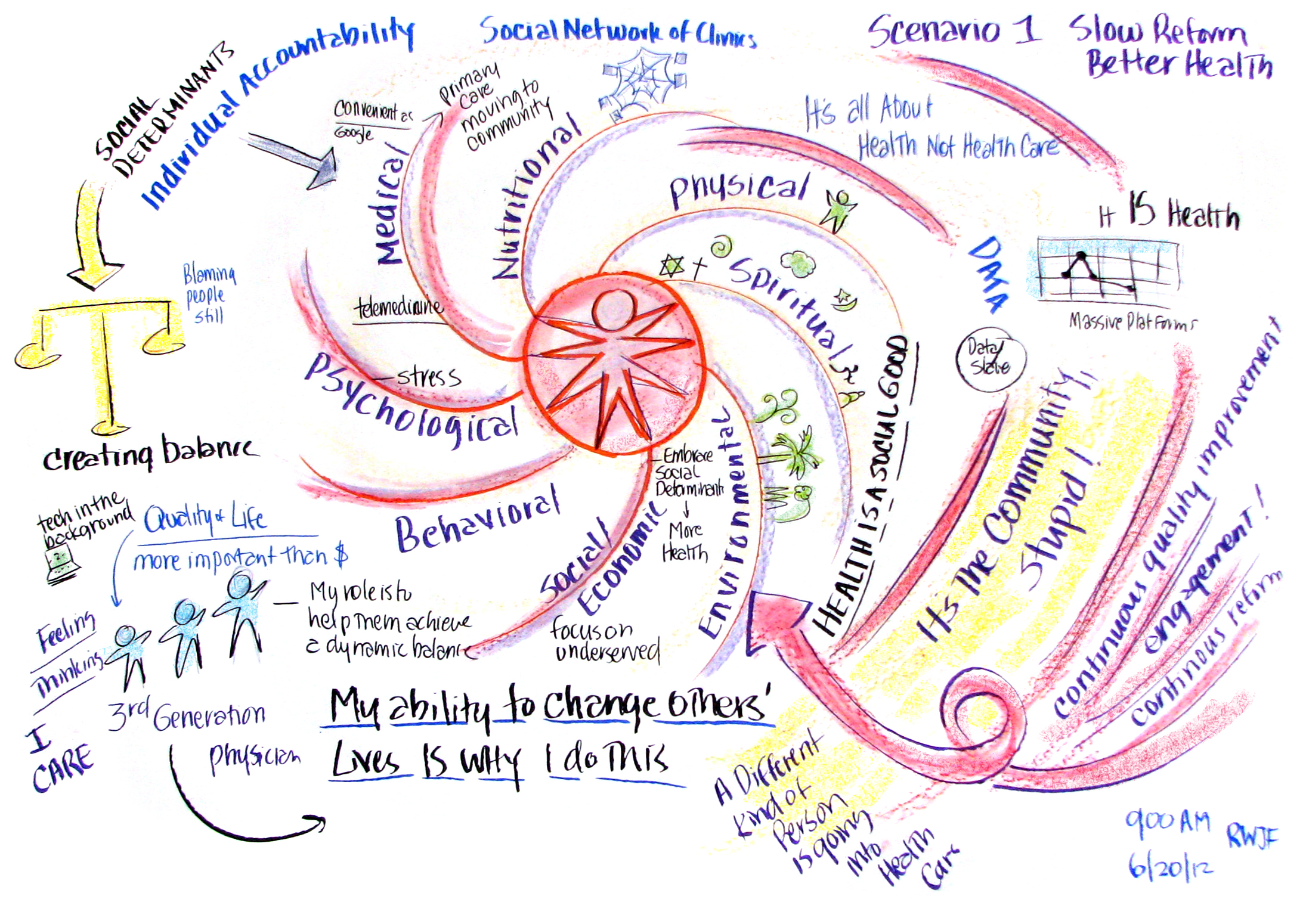
What will health and health care look like in the year 2032? It is a complex question given the immediate health and health care challenges facing the U.S. today. We are nowhere near being the healthiest nation on earth and we are all too aware of health care costs that continue to rise faster than inflation. We spend more than anyone else yet we have a high number of Americans lacking health insurance. We pay higher salaries yet face provider shortages that leave even those with insurance struggling for access to care. We worry about obesity and an older, sicker population. Our underlying social and economic conditions undermine the health potential for many Americans. Yet we also see the great promise of emerging technologies, new treatments, innovative policy options, and social movements promising health equity and food justice. We really could improve health and health care in this country over the decades to come, but we could also see spending more than we can afford on larger, less healthy population.
We recognize that this moment – fraught with challenges and full of promise – is just one moment in a longer sequence of events that have shaped health and health care from the past to the future. The Robert Wood Johnson Foundation’s 40th anniversary gives us an opportunity to acknowledge changes that take place over a long period of time, as well as the positive impact that inspired people can make by caring, daring, and working hard. As the Foundation celebrates its past, it also invites us to look into the future at changes taking place over decades.
The Robert Wood Johnson Foundation has engaged the Institute for Alternative Futures, a non-profit research and education organization, to develop four scenarios describing how health and health care in the U.S. could change over the years to 2032. Scenarios are different stories describing how the future may unfold. They help us view the dynamic systems around us in more complex terms, and then to clarify – and challenge – the assumptions about what we can do which we have carried with us from the past. While the future is inherently uncertain, scenarios help us bound that uncertainty into a limited number of likely paths, and then to explore the uncertainty to find the opportunities and challenges that might otherwise surprise us. People who work with scenarios find more creative options than those who develop plans based only on the past and present. Thus, the purpose of this set of scenarios is to help leaders in health and health care apply a futures perspective to their own work, and to access the kind of creativity and dynamism that can lead to surprising success.
IAF has developed these scenarios using its “Aspirational Futures” approach, which describes scenarios in three distinct “zones”:
- A zone of conventional expectation, reflecting the extrapolation of known trends, the expectable future;
- A zone of growing desperation, which presents a set of plausible challenges that an organization or a society may face, a challenging future; and
- A zone of high aspiration, in which a critical mass of stakeholders pursues visionary strategies and achieves surprising success. (Two scenarios are developed in this zone in order to offer two alternative pathways to surprisingly successful or visionary futures.)
This approach to scenarios invites the application of two different lenses to the future. An objective lens defines the probability space in which the future will unfold, and helps assess the possibility in terms of plausibility and likelihood for the range of imagined outcomes. A subjective lens articulates the shared hopes and fears that we often project – consciously or unconsciously – on to the future. Neither lens is sufficient without the other. Where a group uses only one of these lenses, the future becomes either an intellectual exercise that loses inspiration, or a playful fantasy devoid of import. However, by applying these two lenses together, people can identify meaningful images of surprising success that illuminate strategic insights and invite concerted action. These images can motivate and guide individual, organizational, and societal change.
These scenarios on health and health care in 2032 build upon the Institute’s long health expertise, futures research conducted for this project, and interviews with experts in relevant fields, who are listed in the Appendix. The scenarios are also informed by a series of discussions that the Institute has had with six leaders who make up the judges panel for the Robert Wood Johnson Young Leader Awards competition, which the Institute is now coordinating as part of the Foundation’s 40th anniversary recognition. This panel contributed their vision for 2052 – to help identify successful changes for health and health care in the U.S. the Foundation is twice as old as it is today.
We invite you to read these scenarios with an open mind and with a willingness to challenge your own assumptions about the future. After each scenario, ask yourself what life would be like in that future. What are the scenario’s implications for health, for health care, and for your own field or sector? What would you do differently in that scenario from what you do today? If you doubt the scenario’s plausibility, then ask yourself: what else would need to change in order to make it plausible? These are the types of questions we will address during the RWJF Symposium on the Future of Health and Health Care on June 20-21, 2012 in Kansas City, Missouri.